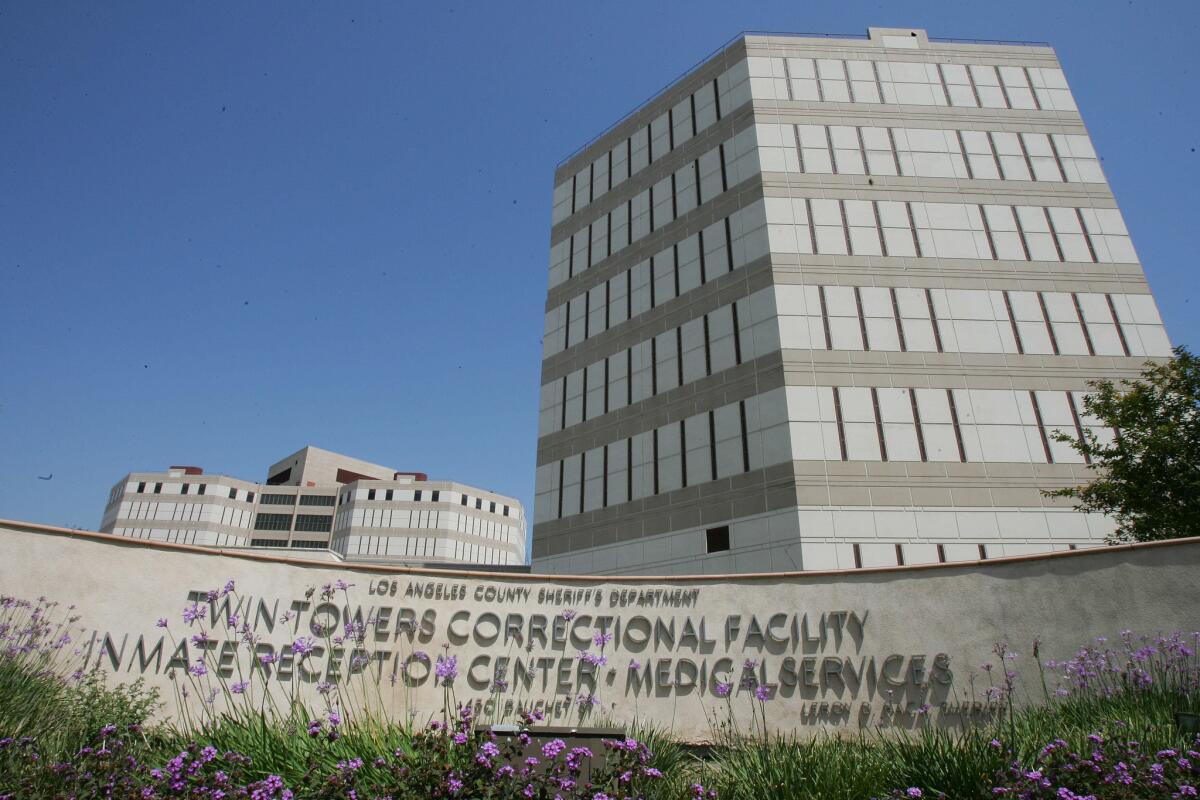A fix for jail overcrowding

With some county jail inmates serving only a fraction of their sentences due to overcrowding, as The Times reported Sunday, Supervisor Michael D. Antonovich has called on Sheriff Lee Baca to provide ideas on how to increase the portion of their terms that inmates actually spend behind bars. The supervisor asked specifically about contracting for more lockups throughout the state — while failing to mention an option that could immediately free up space to house the most serious offenders.
What’s more, that option can be exercised swiftly by Antonovich and his fellow supervisors. The key is smarter handling of an entirely different population of inmates.
Thousands of beds are currently occupied by people awaiting their trials in jail instead of at home simply because they can’t afford to post bail. Money, not public safety, is often what determines whether someone charged with a crime walks free and helps his lawyer prepare a defense or stays locked up.
AB 109, the same legislation that gave counties new responsibilities and new funding for dealing with some felons previously handled by the state, also authorized sheriffs to release pretrial detainees, on electronic monitoring when appropriate, even if they can’t pay their bail. The catch is that the sheriffs must first be given the go-ahead by their county boards of supervisors — and Los Angeles County’s supervisors haven’t budged.
The largest segment of the county’s jail population is made up of about 10,000 pretrial detainees. Not all of them could be safely released pending trial, because some are deemed violent or severely mentally ill and some are being held at the request of other jurisdictions. But about 1,000 could be safely released to free up space for other purposes. Failing to take the steps necessary to free up that space while releasing members of that other, smaller population — people already convicted, some of serious and violent crimes — is bad thinking, bad planning and bad public safety.
Prosecutors and judges also have options. They currently arrange and accept plea bargains that result in felony convictions, including for serious and violent crimes, but don’t result in felony sentences. Convicts instead get conditional probation sentences that require up to a year in county jail. It is those offenders who are currently serving at most a small portion of their jail time. That population makes up a scant 6% of jail inmates, and could easily be accommodated if Los Angeles County’s elected officials — the district attorney, the judges, the sheriff and, in this case most of all, the Board of Supervisors — put smart management of the jails ahead of habit and blame.
More to Read
A cure for the common opinion
Get thought-provoking perspectives with our weekly newsletter.
You may occasionally receive promotional content from the Los Angeles Times.






